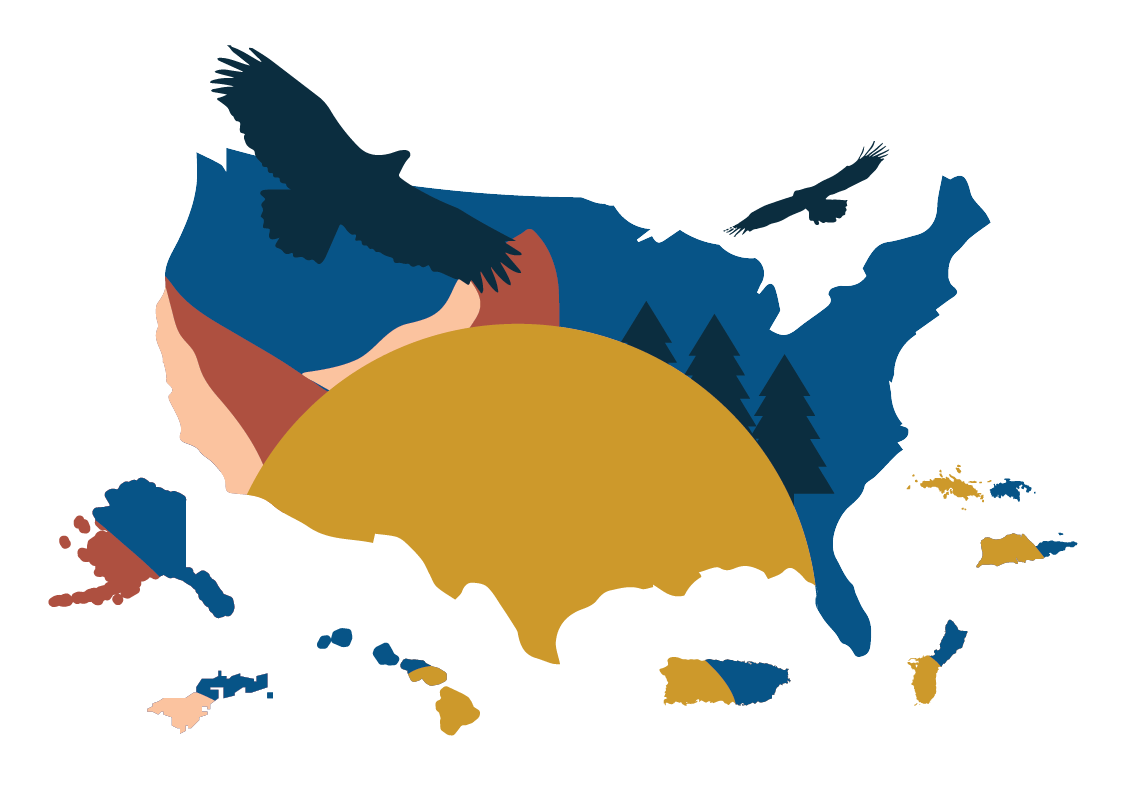Process & Application Cycle
Additional Resources
Tribal governments may apply directly for Hazard Mitigation Assistance grant funds, and do not need to apply as subapplicants under the state. Tribal governments may, however, apply as subapplicants if they choose to do so.
Tribal governments need to adopt a FEMA-approved hazard mitigation plan to apply for and receive non-emergency disaster funds from FEMA assistance programs.

Review additional resources for Tribal Nations at FEMA's Tribal Affairs hub.
Grant Process and Application Cycle
Resources are available on each grant program's page that describe what tribal governments can expect before, during, and after the application cycle. The timelines for application can vary by award and project type. Learn more about the average timelines for disaster programs and non-disaster programs.

The Flood Mitigation Assistance grant program is a competitive program that provides funding to states, federally recognized Tribal governments, U.S. territories, and local governments.
The Flood Mitigation Assistance Swift Current (Swift Current) effort provides funding to mitigate buildings insured through the National Flood Insurance Program (NFIP) after a major disaster declaration following a flood-related disaster event to reduce risk against future flood damage. The Swift Current availability window accept applications between June 1, 2023 – May 31, 2024.
The Safeguarding Tomorrow RLF program complements and supplements FEMA’s Hazard Mitigation Assistance grant portfolio to support mitigation projects at the local government level and increase the nation’s resilience to natural hazards and climate change. These low interest loans will allow jurisdictions to reduce vulnerability to natural disasters, foster greater community resilience and reduce disaster suffering.
A presidential major disaster declaration makes HMGP funds available if requested by a governor or tribal executive in eligible communities in a state, tribe or territory. The amount of funding is based on the estimated total federal assistance, subject to a sliding scale formula. Funding is based on the estimated total or aggregate cost of disaster assistance.
Additional Resources
Grant funds are available for pre- and post-emergency or disaster related projects. These funds support critical recovery initiatives, innovative research and many other programs.
FEMA's Tribal Consultation Policy, updated in July 2019 with input from Tribal Nations, outlines the process that FEMA officials use to conduct consultation with tribal governments. FEMA’s Tribal Consultation Policy Instructions provide guidance and direction for FEMA’s implementation of the Tribal Consultation Policy.
Trainings and webinars are designed to help FEMA regional partners and state, local, tribal, and territorial governments create effective hazard mitigation plans that meet FEMA’s requirements and reduce risk in their communities.
Tools and job aids are available to help applicants and subapplicants throughout the process of applying for Hazard Mitigation Assistance grants.


